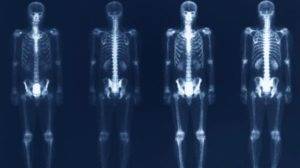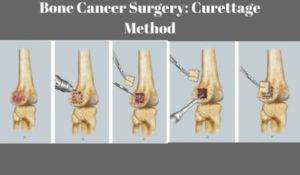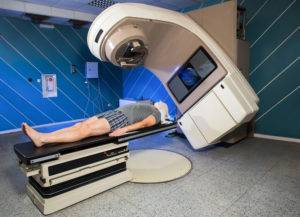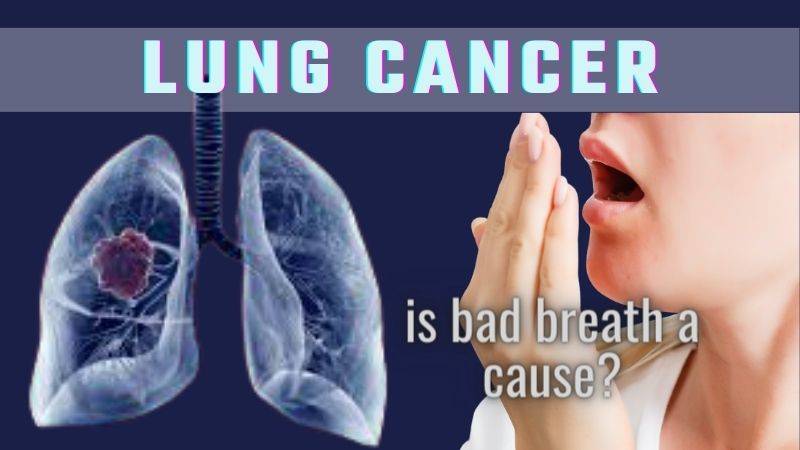On May 11 2021, Axel Kahn confirmed that he was stepping down from his role as the president of the French anti-cancer group because his cancer had “become more aggressive lately.”

Axel Kahn was a prominent French scientist and geneticist. After his diagnosis of bone cancer, Axel Kahn bemusedly commented, “I’m fighting cancer, and it turns out that the patrol caught up with me: I too have cancer.”
There are over 200 bones in the human body. The skeleton supports the body, protects the organs, and aids mobility by functioning as a lever.
Bone cancer can typically be categorised as either primary or secondary. Primary bone cancer is relatively rare and refers to cancer which begins in the bones. In other words, the cancer cells are bone cells that have become cancerous.
On the other hand, secondary bone cancer occurs when cancer cells have spread to the bones after developing in another part of the body. It is also metastatic bone cancer.
Though the cases of primary bone cancer are rare, they have several types. Some are mentioned as follows:
- Osteosarcoma: While anyone can get this type of cancer, adolescents (10 to 19 years) are more prone to it. The most common sites for osteosarcoma are the thigh bone (femur), upper shin bone (tibia), and upper arm bone (humerus).

- Chondrosarcoma: This primary bone cancer originates in the cartilage cells of the bone. It typically affects 30 to 60 years old.
- Ewing sarcoma: Most common in children (0 to 14 years) and adolescents, Ewing tumour can occur in the bone cells as well as the soft tissues of the body.
- Spindle cell sarcoma: Most common in 30 to 60-year-olds, the most common site for this primary bone cancer are the bones of the leg.
- Chordoma: This primary bone cancer is relatively rare. It develops at a slow rate and grows from the notochord, which forms the early spinal tissue in a baby developing in the womb.
Symptoms of Bone Cancer
It is harder to spot symptoms of bone cancer on your own. Your doctor might be taking an x-ray for some other reason, such as a sprain, and might notice a tumour growth.
So, it is significant to be familiar with the basic symptoms of bone cancer to increase the chances of early detection.
Some common symptoms of bone cancer are:
- Pain near the tumour: The tumour is typically dull and painful. It gets more achy with exercise and often wakes you up at night. It is often mistaken as a sprain or growing pains in the cases of children.
- Swelling: Swelling and redness (inflammation) happen when the tumour growth is large. However, you might not see or feel a lump if the bone is deep inside the body tissues.
- Affected Movements: Bone cancer reduces mobility and restricts movement depending on its location. If the affected bone is located in the leg, it may cause a limp. If the tumour is in the spine, it may press on nerves which can cause numbness, tingling or weakness in the arms or legs. This is called spinal cord compression.

- Broken Bones: The tumour may weaken the bone, increasing its chances of fracture.
- Other symptoms include tiredness, weight loss, fevers, night sweats, and fatigue.
What were the factors that might have led to Bone Cancer Axel Kahn?
The risk of developing bone cancer is dependent on various factors, such as age, genetics, lifestyle and environmental factors.
Former president of the National League on Cancer, Axel Kahn, had not anticipated his journey would take such a turn. In a preface to his unpublished book, he wrote, “The disease that I fight fiercely as president of the League had been waiting for me at the turn, launching a massive attack.”

Although his profession made him familiar with cancer, Axel Kahn had not noticed the earlier symptoms of bone cancer.
It is probably since symptoms of bone cancer are not as evident. This makes it all the more crucial to understand what predisposes us to it.
While the current research has not yet established a set cause that results in bone cancer, some factors that make you more prone to it are mentioned below.
- Age
It is a common belief that the chances of cancer increase with age. However, there are some types of cancer with which younger people are at higher risk (such as Osteosarcoma and Ewing sarcoma).
- Cancer Treatments
Doctors also link the development of bone cancer with previous cancer treatments, mainly radiotherapy and chemotherapy drugs called alkylating agents. It is often the case with patients who received the treatment during childhood.
- Other Bone Diseases
There are some types of rare bone diseases which increase the risk of developing bone cancer. These diseases include Enchondroma or osteochondroma, Ollier’s disease, and Paget disease.
- Genetic Factor
Certain genetical predisposition also makes people prone to the risk of bone cancer. Some examples of such genetic syndromes would be: Li-Fraumeni syndrome, Hereditary retinoblastoma, Werner syndrome, Rothmund–Thomson syndrome, Bloom syndrome and so on.
Some people also believe that injuries or a knock to the bone may cause bone cancer. But research studies do not support this. It is essential to contact a doctor to distinguish facts from stories.
What are the chances of getting Bone Cancer?
Even after his diagnosis of bone cancer, Axel Kahn has expressed his bemusement in the irony of his situation as the president of the League against Cancer. Due to his worsening condition, he had to give up his position.
Each case of cancer is unique due to its varying developing factors. The case of primary bone cancer is considered rare.
Based on 2017–2019 data, studies by SEER cancer research demonstrate that approximately 0.1 per cent of men and women will be diagnosed with bone and joint cancer at some point during their lifetime.
In 2019, an estimated 58,612 people were living with bone and joint cancer in the United States.
These studies further show that the rate of new bone and joint cancer cases was 1.0 per 100,000 men and women per year. These rates are age-adjusted and based on 2015–2019 cases and deaths.
It also anticipates 3910 new cases and an estimated death of 2100 in the year 2022 in the US.
How is Bone Cancer detected?
It is a known fact that early diagnosis of bone cancer minimises the risk factor associated with it.
Research by the Macmillian organisation depicts that over 600 people are diagnosed with bone cancer in the UK annually.
A visit to the doctor for diagnosis typically entails an enquiry about symptoms and medical history followed by a physical examination. These physical examinations include:
- X-rays: These show tumours and how big they are.

- CT scans: A computer uses X-rays to make more detailed pictures.
- MRI scans: These use a strong magnet to show inside your body.

- PET scans: A technician injects radioactive glucose (sugar) into your vein. A scanner then spots cancer cells, which use more glucose than regular cells.
- Bone scans: A technician injects a different radioactive material into your vein. It collects in your bones, where a scanner can see it.

All these tests provide varying images of the bone, which the doctor further inspects for diagnosis. Some other tests involve a blood test and biopsy.
In the latter, the doctor takes a tumour sample with a needle or a cut in your skin. The collected cells or tissues are then observed under a microscope to diagnose.
What are the treatment options?
After diagnosis, various health professionals form a multidisciplinary team (MDT) that works with you to plan your treatment for primary bone cancer. This team would typically consist of a surgeon, oncologist, specialist nurse, radiologist, pathologist and so on.
The decision regarding the treatment choice is dependent on varying factors. There are no right or wrong answers; you’ve to consider the pros and cons of each treatment option.
Some people are sceptical about several cancer treatment options because they are unsure about the side effects. But it should be kept in mind that medicines can minimise side effects.
A doctor can give a particular treatment for different reasons, and the potential benefits will vary depending upon the patient’s medical predicament.
This predicament comprises:
- your general health
- where the cancer started in the body
- the size of the tumour
- if the cancer has spread
- your needs and choices.
A patient’s situation can be adequately assessed by the MDT, who would then suggest the best course of action for treatment.
The treatment may include:
- Surgery for bone cancer
This is the main part of the treatment, particularly in cases of primary bone cancer, as it aims to remove all cancer cells from the bones, typically through an operation called a wide local excision. The type of surgery varies according to the part affected by the cancer and how far it has spread.

- Chemotherapy
Chemotherapy uses anti-cancer (cytotoxic) drugs to destroy cancer cells. Chemotherapy can be provided for varying purposes, depending on the patient’s condition.
It is given before the surgery to shrink the cancer, making it easier to remove. It can also be given after the surgery to destroy any remaining cancer cells to prevent cancer from returning.

- Radiotherapy
Radiotherapy uses high-energy rays to destroy cancer cells, and its usage varies per the patient’s condition.
It can be given as an additional treatment with chemotherapy and surgery. It is also used as the main treatment in cases where surgery cannot remove the cancer.

- Targeted Therapy
Targeted therapy uses drugs to find and attack cancer cells. It is also known as immunotherapy.
Different types of targeted therapy are adopted to target something in or around the cancer cell that is helping it grow and survive. There are majorly three categories of target therapy:
- i) Angiogenesis inhibitors: They block the chemical signals that cells use to make blood vessels grow. This slows down the growth of the tumour and sometimes shrinks it.
- ii) Cancer growth inhibitors: It targets chemical signals which tell the cells how and when to develop and divide. These drugs may stop cancer cells from developing or dividing by blocking the signals.
iii) Monoclonal antibodies: These antibodies target cancer cells’ receptors to block their growth and blood supply, help the immune system recognise cancer cells and so on.
Each cell has a receptor that helps in sending and receiving signals. Most monoclonal antibodies target receptors that are mainly found on cancer cells.
If you are diagnosed with primary bone cancer (also called bone sarcoma), your treatment will usually be planned and given in a sarcoma treatment centre.
There are different treatment labs, typically assigned according to the patient’s age.
Some hospitals have teenage cancer units (called TYA units) specially designed for teenagers and young adults.
Some hospitals, often called principal treatment centres, specialise in treating children’s cancers. They are relaxed and friendly places. They try to give you and your child a positive experience.
What is life like with cancer?
On May 14, in his Twitter thread, former president of League against Cancer, Axel Kahn wrote, “The joy of any moment of beauty is increased tenfold with the thought that we will never know it again. Inaudible sensation, immense happiness”, along with flowers and a rainbow.
Life with cancer is indeed a matter of coping. It is vital to acknowledge your feelings and express them.
Bone cancer can even require amputation, and the loss of a limb can be hard to cope with. Such cases would require equal attention to the mental and practical changes that patients may go through after the treatment.
Life after the surgery might also require follow-ups with physiotherapy, further surgery, and other possible problems such as infections, wear and tear, swelling of the limb etc.
Through this all, one’s sanity and moral support often require constant dependence on their medical team, family and friends.
Axel Kahn’s brother, the journalist and founder of Marianne, Jean-François Kahn reminisced the time he spent with, during his treatment with cancer Axel Kahn “You know, the last time I saw him, you might be shocked, I knew he would fall asleep in three days. And he knew it was over in three days. We have shared memories (…) We stayed together for 1 hour 30 minutes, and for 1 hour 10 minutes, we would not stop laughing without evoking memories together. We laughed loudly without stopping. And why not?”
Even after his worsening condition of cancer, Axel Kahn had demonstrated his strong will and acceptance when he announced in the last post published on his blog on June 17, “I won’t be any more soon. ”
What were the chances of surviving the cancer Axel Kahn had?
Considering the late diagnosis of bone cancer, Axel Kahn’s case was already in a precarious position. However, the seventy-six-year-old was not afraid of death as he openly said,
“I was wondering what my attitude would be as I approach death. I don’t do it singing. I love life. But I don’t do it in terror either. It’s a very important time of my life…I will use the coming days to say to each of the leaders’ help me, keep fighting. I am counting on you. Our fight against cancer is just.”
Along with League against cancer, Axel Kahn vicariously fought for survival against cancer in his personal as well as professional life. He said, “I am now going to fight two battles: a personal battle, which I am going to fight alone; an honourable battle against my illness. And then, as I only have a little time left, I will try to do as much as I can with the time I have left.”

SEER cancer research analysed the cases and deaths of bone and joint cancer in the US from 2015 to 2019. According to their studies, the death rate was 0.5 per 100,000 men and women per year.
Through these studies, there were further able to release a 5-Year Relative Survival Rate, which is 67.4%. Relative survival estimates the percentage of patients who would be expected to survive the effects of their cancer. It excludes the risk of dying from other causes.
But, it is important to remember that these estimated statistics are based on large groups of people. Therefore, they cannot be used to predict exactly what will happen to an individual patient.
What does the latest study on done cancer state?
Despite the legacy of his work against cancer, Axel Kahn acknowledged the battle is yet to be won. He said that the League “…will continue to look after the best interests of people with cancer, both in terms of their rights, respect for their dignity and, in this period of the pandemic, the most acute possible consideration of these people as the public to be protected cancers.”
The League against Cancer further reassuringly claimed, “…that certain reforms of the League are implemented to meet the challenges to come in the fight against cancer.”
The need for reforms, awareness and changes in cancer treatment is not just necessary at the practical level but also at the theoretical level.
Researchers worldwide are looking at the causes, diagnosis and treatment of primary bone cancer. For instance, the outcomes for people with a type of primary bone cancer called osteosarcoma have shown minimal improvement in the last 20 years.
Researchers are looking into how and why osteosarcoma starts and grows. They can decide what treatments are most likely to work best by knowing more.
There is also a certain amount of research going into treatment, such as randomised controlled trials to test targeted (lenvatinib) or chemotherapy (ifosfamide and etoposide) drugs.
Furthermore, research is also being conducted to find better ways to monitor bone cancer. Currently, a study is looking at measuring blood vessels’ growth in several cancers, including bone cancer, to analyse the growth and multiplication of cancer cells.
Even after his deteriorated health due to cancer, Axel Kahn had talked about the need for research, awareness and rights for cancer patients when he said, “Help me, continue the battle. I am counting on you.”







